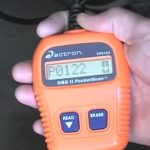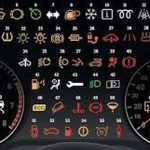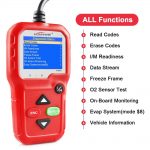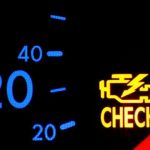
How do you read codes on a car? Many people wonder if this is possible. There are a number of different devices on the market. A basic scanner is the best option for a first-timer who doesn’t know much about cars. A more advanced scanner offers more advanced features, but if you’re new to cars, you’ll probably want to choose a simple scanner that you can use yourself. Once you know how to use it, you’ll be able to get a car code reader for your car.
OBDII
There are many ways to diagnose your car’s problems with OBDII systems. In addition to identifying the cause of your car’s problems, these codes will also inform you about the condition of your car’s systems. To diagnose a specific problem, first select the type of code you are looking for. Common problems, such as low oil pressure and overheating, are marked by a ‘P’ code.
You can use your odometer to determine the exact problem if you want. This method works well with newer vehicles equipped with an OBDII system. A service engine light will also turn on. If the vehicle has a problem with hydrocarbon emissions, then the Check Engine light will be illuminated. Sometimes, the check engine light will come on without any visible drivability problems. When this happens, you may need to seek help from a professional to get your car fixed.
OBD-II systems can also provide information about the engine’s condition through diagnostic trouble codes. These codes are five-characters long and indicate a specific vehicle problem. You should know that each character represents a different piece of information. Understanding the DTC codes will help you reduce the amount of downtime your vehicle experiences when fixing it. However, it’s vital to check your car’s code before calling a mechanic.
Before you attempt to diagnose your car with OBDII systems, you should know what they are. Typically, the OBD port is located under the dashboard or under the steering wheel column, though it can also be located under the glove box. There are a number of different models of cars, so be sure to read your owner’s manual before starting work. Some codes can be difficult to understand. If you don’t know how to interpret them, consider buying an online guide.
OBD-II systems began a few decades ago, and they’ve come a long way. The OBD system was first used in the early 1980s and began to turn on the check engine light when a problem was detected. But because different manufacturers used different diagnostic signals, reading trouble codes was a complicated task. Therefore, mechanics had to use different tools for each car. But today, these diagnostic tools are widely available.
OBDII code reader
An OBDII code reader for car can be a valuable tool in diagnosing problems with your car. While there are several types of error codes, some codes are more serious than others and could result in costly repairs. To help you determine which codes are more important, here are some tips. First, make sure to know what your car’s check engine light means. The light will typically light up if you have a malfunction. However, some codes may not trigger this light.
Depending on the type of code reader you choose, different brands use different procedures. Some are very straightforward and simply draw power from the OBD port. Other readers require a special procedure to detect and fix the issue. In any case, you will need to find the one that suits your needs the most. If you’re using a self-powered model, you’ll need to set up the OBD port so that the device can draw power from it.
A high-quality OBDII code reader should have a large database of generic and DTC codes. If you’re not sure which code to select, you should check the manufacturer’s website. Having a code reader on hand when you need it can save time and money. Moreover, a good one will allow you to download the data to your device. If you’re looking for a car scanner with the most advanced features, the Blink MX+ OBD code reader is worth a try. It’s compact size and remarkably stable wireless connection are key features.
An OBD2 scanner is useful for mechanical work and can be a lifesaver when it comes to the car’s check engine light. While basic models can only read the codes of the check engine light, you’ll likely need a more advanced model if you do mechanical work on your vehicle. An OBDII code reader can help you save thousands of dollars. You can also repair your car yourself.
Using an OBD2 code reader is easy to use and saves you time and money. You can use the scanner with the included software or connect it to your computer to run diagnostics. A multifunctional reader also has a built-in fault code dictionary and can turn off the check engine light. Some of these devices even have the ability to work with the latest versions of Windows, MacOS, and Linux operating systems.
OBDII scanner
If you are thinking about buying an OBDII scanner to diagnose problems with your car, you have several different options. These scanners range in price, depending on how sophisticated they are and their capabilities. Professional scanners connect to your car through a wire and can perform practically any function OBD2 permits. However, they can be quite expensive and are far beyond the reach of most car owners. In addition, most shops will charge you $100 or more for diagnostics with a scan tool, because they have invested so much in the scanner.
An OBDII scanner plugs into a special port on your vehicle, called the OBD port. This port is typically located near the steering wheel column, though it can be found in many other places, including the glove compartment. These scanners can read codes from your car and display them in numerical order. To determine which codes are related to your car’s condition, you must first identify which type of vehicle you have and its VIN.
If the OBD code is displayed, you should take the necessary action immediately. If you notice the Check Engine Light on your dashboard, you must investigate the cause of the issue. Oftentimes, this code indicates an issue with your vehicle’s Emission Control System. Using a scan tool will help you identify this problem and take action to fix it. You’ll have a much easier time if you have the correct diagnostic tool.
OBDII codes can be either generic or manufacturer-specific. The generic codes mean that your car is malfunctioning in some area. The generic codes are the same on all cars, and the manufacturer-specific codes are specific to that car. Popular car makes include Acura, BMW, Chevrolet, Chrysler, Dodge, Jeep, and Lexus. The enhanced codes provide more information. They also include systems other than the engine control system, such as the ABS, airbag, brake fluid, and body parts.
A scan tool is essential for every car owner. If you’re not a mechanic, an OBDII scanner can save you thousands of dollars a year in repair bills. By using a scan tool daily, you can keep up with the condition of your car, and avoid expensive repairs. It will also keep you informed about the status of other systems in your car. You can also download apps for your smartphone to read codes on your car.
EVAP code reader
If your check engine light has started to flash, it’s likely that your EVAP system is malfunctioning. While a loose gas cap or a blocked EVAP pipe is a relatively simple fix, a problem with the fuel system can require extensive diagnostic work and cash flow. Most drivers tend to ignore their check engine light when it appears, but you could be exposing yourself to a potentially serious environmental problem.
A faulty EVAP system can cause pollution and fail a smog test. You can manually check this system or buy a scan tool to do the job. A scanner is more reliable, but you need to be familiar with EVAP codes to make the best use of it. Once you understand how to interpret the codes, you can fix any problem. EVAP code readers are not a substitute for a certified auto mechanic, but they can help you save time and money.
It’s important to note that EVAP system problems aren’t generally life-threatening. However, they can trigger the Check Engine light. While the Check Engine light only shows a single light, it can indicate hundreds of conditions that can affect the vehicle. If you suspect that your EVAP system has a serious problem, a diagnostic shop will diagnose it and repair it for you. This will ensure the safety of your vehicle as well as help the environment.
In some cases, a simple smoke test may be all that’s needed to clear the EVAP code. For example, a faulty solenoid or EVAP purge valve could be the culprit. To test this, an auto mechanic will use a smoke leak detector or advanced scan tool to find the problem. It’s worth the extra money to find a reliable source of repair for your vehicle.
You should be familiar with the codes that your EVAP system generates. The codes associated with the code P0442 DTC are related to the failure of the solenoid or leaking charcoal canister. It’s important to know that there are different codes for different vehicles. If you don’t know how to read these codes, a car mechanic is recommended. If you’re new to fixing codes yourself, you may want to get a repair manual, such as Chilton’s or ALLDATA.






